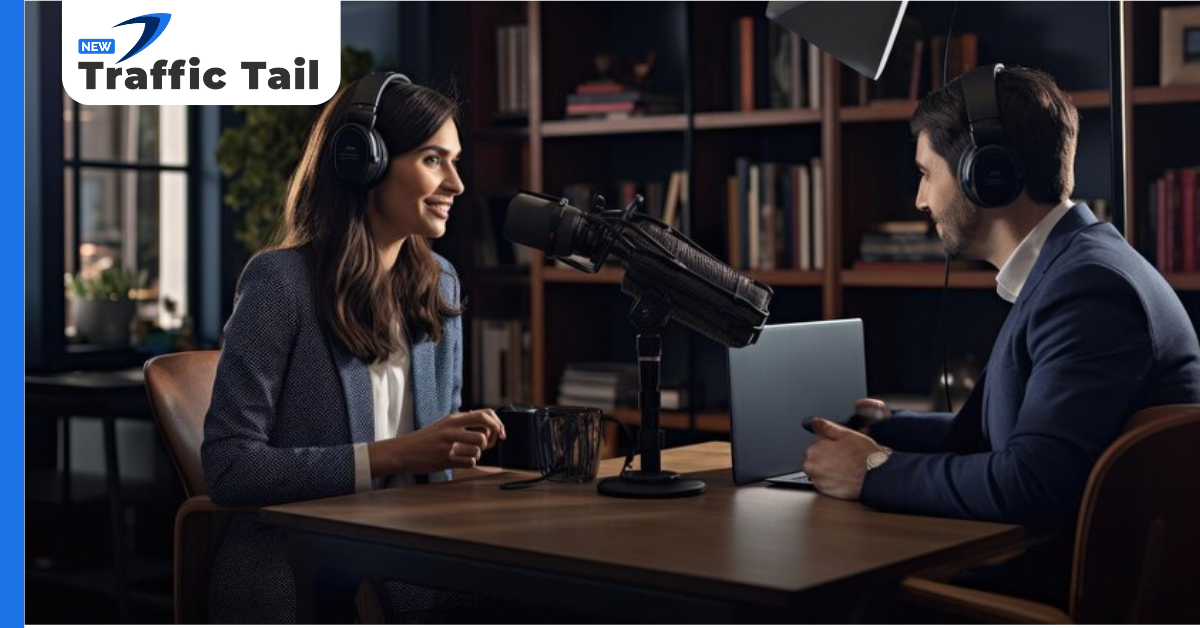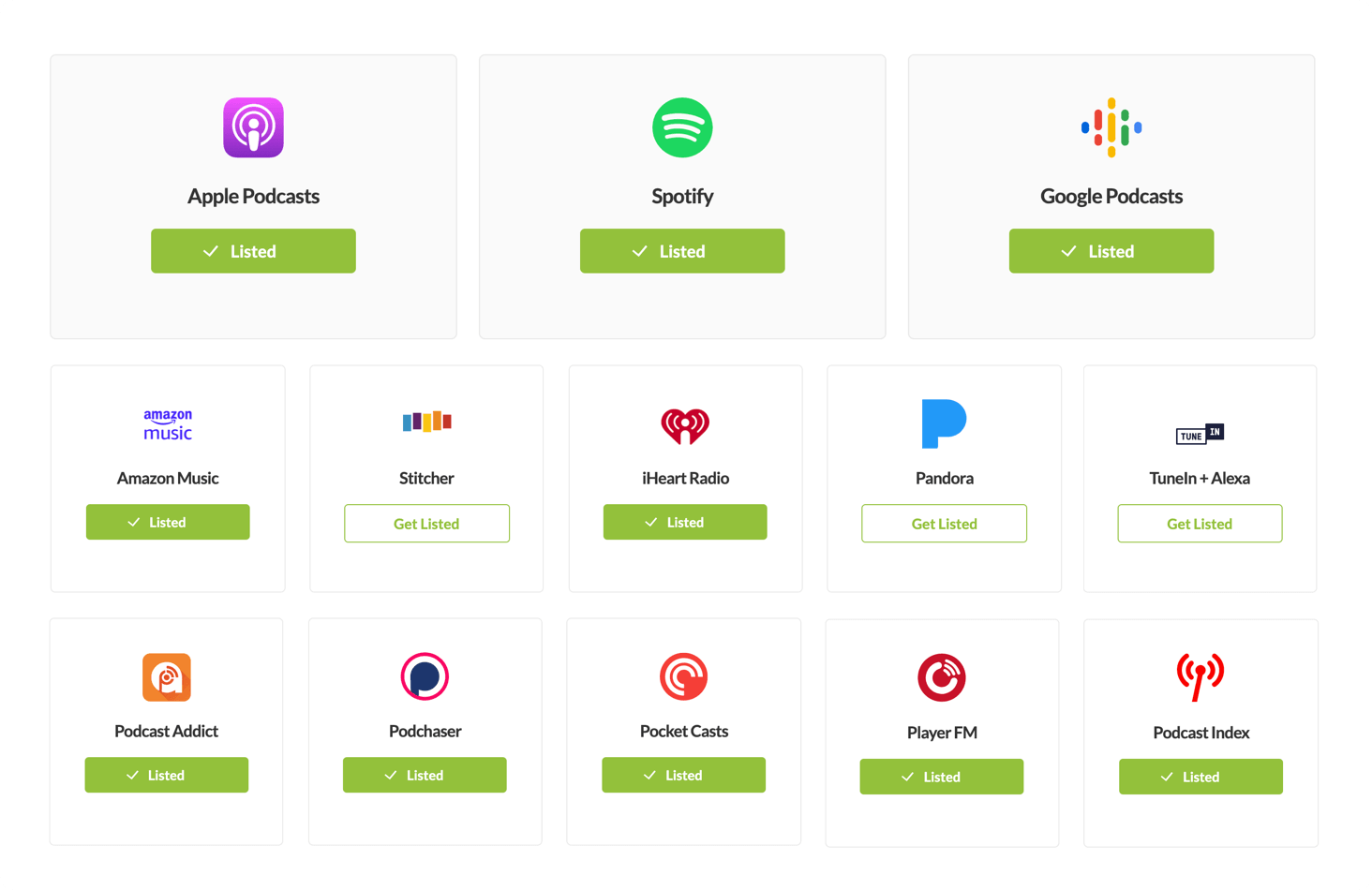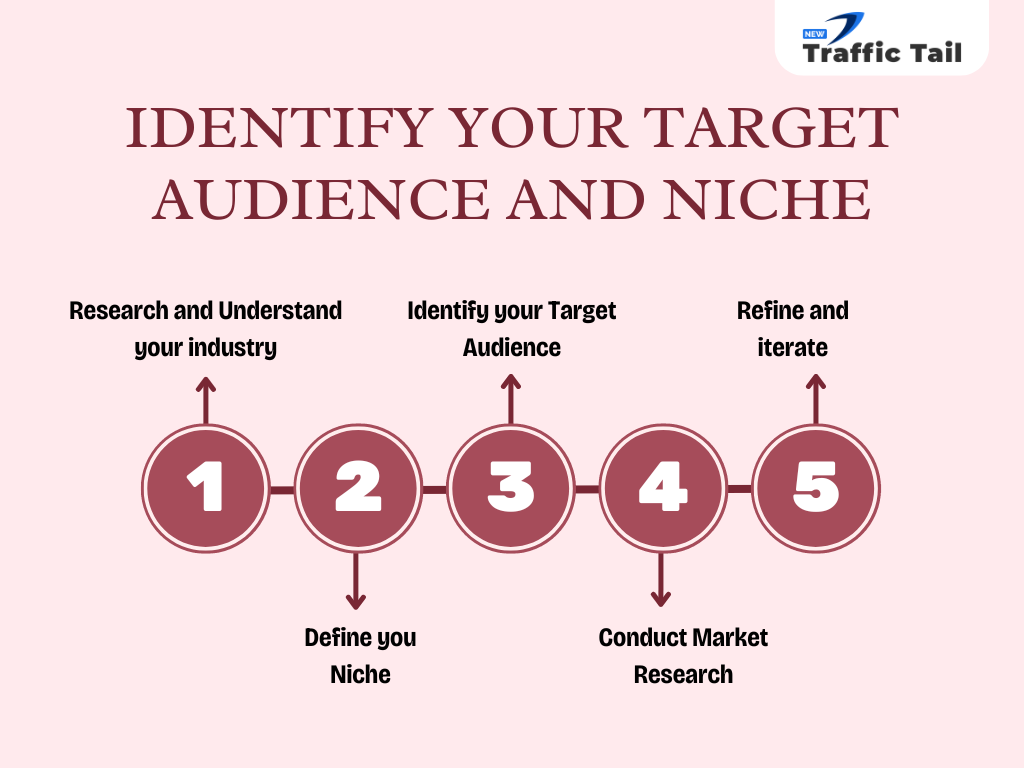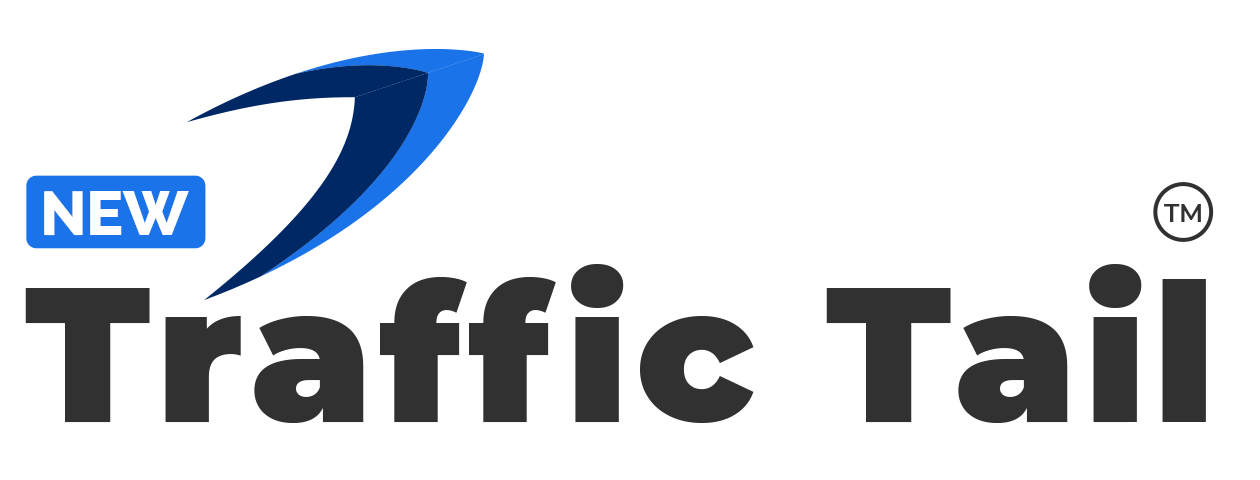Thinking about starting a podcast channel, but don’t know how to start a podcast with no audience?
Over the past ten years, podcasting has grown dramatically in popularity and is now a potent tool for reaching a global audience with ideas, expertise, and stories. But starting a podcast might be challenging, particularly if you don’t already have a following.
But do not worry!
It is completely possible to start a successful podcast from the beginning if you have the correct plans and strategies. In this blog equipment, we will lead you through every step of creating a podcast from scratch and growing it into a successful platform.
Without further ado, let’s learn how to start a podcast with no audience.

Podcast- A Quick Overview!
Podcast is an internet-based digital audio or video series that can be streamed or downloaded online. It includes a wide range of subjects, such as news, instruction, entertainment, and more. Podcasts offer a unique way for listeners to interact with information while on the go, during workouts, commuting, or even doing housework. This provides a distinctive and adaptable media consumption experience.
Furthermore, the presenters and guests who frequently offer their knowledge, experiences, and viewpoints on podcasts foster a sense of intimacy and connection between the content makers and their audience.
Overall, podcasts are becoming a more and more popular medium for transmitting information, entertainment, and education, offering listeners a wide range of content to study and enjoy.
If you believe you can deliver good content to active listeners, then let’s learn how to start a podcast with no audience.
Who Should Start a Podcast With No Audience?
No audience? No followers? No support? With all such negativity, you might be thinking right now – How to start a podcast with no audience? Am I eligible to start a podcast channel? Well, the answer is straight YES!
Remember this- if you wish to do anything you can turn it into reality- all you need is confidence and some knowledge.
You know what? The beauty of podcasting is that it is open to all users. From the outside, it may appear to be a hostile or exclusive area. However, the truth is that even novices with little to no expertise can start creating excellent podcasts.
Here are some skills of people who can start a podcast with no audience:
- Passion for a particular topic.
- Have experience or expertise in the topic.
- Good communication skills.
- Consistency and commitment.
- Creativity in Questions
- Entrepreneurial skills.
Are there any free options for podcasting with unlimited storage?
Yes, many podcast providers provide free hosting options, allowing you to upload your podcast episodes without incurring any payments. Spotify, Acast, Podomatic, Pinecast, and Buzzsprout are some of the most popular services for free hosting.
These platforms often earn revenue through advertising or by charging a subscription fee for premium features. Keep in mind that, while hosting is free, there may be additional expenses for equipment, software, or marketing your podcast.

How to Start a Podcast with No Audience in 8 Steps
Ready to start a podcast channel? Well, this can be overwhelming but you have to prepare yourself for each step. So, here we have shared the complete guide on how to start a podcast with no audience that may help you from start to end.
Let’s go!
Step 1: Identify your Target Audience and Niche
Before you hit the record button, carefully consider your podcast’s target demographic and niche. What subjects pique your interest? What special knowledge or viewpoint are you able to provide? Deciding on a certain specialization will help you stand out from the competition and draw in a loyal following of podcast listeners.

Step 2: Arrange the Format and Content
After you’ve determined your niche, it’s time to organize the format and content of your podcast. Will it be a series with a narrative focus, a solo commentary, or an interview-style show? To keep organized, choose the duration and frequency of your episodes and make a content calendar. Always remember to make your programs interesting, educational, and pertinent to the interests of your viewers.
Step 3: Make an Investment in Quality Podcast Equipment
Professional-sounding podcast production requires high-quality audio equipment even if you don’t have to spend a fortune on gear. You will need recording software, headphones, and a microphone at the very least. Find equipment that satisfies your needs and falls within your budget by doing some study.
Step 4: Take Episode Videos and Edit Them
Now that your gear is assembled, it’s time to begin recording your shows. Choose a place where there won’t be much background noise, and practice speaking firmly and clearly. Spend some time editing your episodes after recording to get rid of any errors or pointless pauses. For a finished result, pay attention to the timing, flow, and sound quality.
Step 5: Write a Catchy Podcast Description and Cover Art
When potential listeners browse podcast directories, they will initially view your program’s cover image and description. Spend some time crafting a captivating cover image that captures the essence of your podcast. Craft a crisp and captivating podcast synopsis that explains your show’s purpose and entices listeners to tune in.
Step 6: Start and Advertise Your Podcast
Now that your episodes are polished and ready for release, start your podcast! In addition to promoting it on social media, your website, and other pertinent channels, submit your podcast to well-known directories like Apple Podcasts, Spotify, and Google Podcasts. To help spread the word, think about getting in touch with friends, relatives, and influential people in your niche.

Step 7: Interact with the People in Your Audience
It takes time and work to develop a devoted following, so be persistent and patient when interacting with your audience. Encourage listener feedback, reply to messages and comments, and include suggestions from the community in upcoming episodes. This will solve your problem- How to start a podcast with no audience. Finally, creating a community around your podcast will make podcasting more rewarding for you as well as help you expand your audience.
Step 8: Always seek to improve and adapt
Since the world of podcasting is always changing, it’s critical to always enhance and modify your program to accommodate your audience’s shifting demands and tastes. Keep an eye on your podcast’s success data, pay attention to listener comments, and don’t be afraid to try out different themes and styles. You can make sure that your podcast is current and interesting for years to come by remaining adaptable and open-minded.
Now that you have learned how to start a podcast with no audience, it’s time to know the tips or strategies that can help you get good returns and make you highly visible on the internet.
How to Start a Podcast with No Audience Successfully: 5 Effective Tips to Grow!
Remember, growing a podcast audience takes time, commitment, and deliberate work to build a podcast but with the correct strategy, you may reach a wider audience and get new listeners. So, follow the given tips to expand your podcast and accomplish your objectives.
#Tip 1: Post High-quality Content Consistently
Maintaining and growing your podcast’s audience requires consistency. Set up and adhere to a regular publishing schedule. Make sure you regularly provide high-quality content, regardless of how often you release episodes—weekly, biweekly, or monthly.
To keep listeners interested, plan your episodes ahead of time, change up the subjects you cover, and make an effort to deliver both informative and enjoyable information every time.
#Tip 2: Optimize Your Podcast for Discoverability
If you’ve started a podcast with no audience, then this tip is most important to follow up. By making your podcast easier to discover, you can attract more listeners. Make sure your episode titles and podcast description contain pertinent keywords and use a clear, descriptive title that accurately summarizes your material.
To increase the visibility of your podcast, submit it to well-known directories like Apple Podcasts, Spotify, Google Podcasts, and Stitcher. Additionally, you can get help from an expert digital marketing agency that may help you reach your target audience more conveniently.
#Tip 3: Leverage Social Media and Online Communities
To promote your podcast and interact with your audience, make use of social media platforms and online communities. To draw in new listeners and maintain the interest of your current audience, establish specialized social media accounts for your podcast and post announcements, behind-the-scenes footage, episode highlights, and teaser clips.
To promote your podcast and build relationships with potential listeners, join pertinent online communities, forums, and organizations that are associated with the specialty of your show. Take part in the discussions.

#4 Tip: Collaborate with Guests and Cross-Promote
By working together, you may broaden the audience for your podcast and attract new listeners. Invite authorities, celebrities, or other podcasters in your industry to appear on your program. Then, use their already-existing listenership to advertise your podcast. Similarly, extend an invitation to appear on other podcasts to expand your audience and promote each other’s programs. Cross-promotion is a win-win tactic that will enable you to naturally expand your audience.
#5 Tip: Interact with Your Audience and Request Feedback
Developing a close bond with your listeners is crucial to the success of your podcast. Encourage listeners to engage with your podcast by posing queries, getting comments, and extending an invitation for them to offer ideas and opinions. To improve your podcast and make it more helpful to your audience, reply to messages, reviews, and comments left by listeners. You can nurture audience loyalty and motivate them to tell others about your podcast by actively interacting with them.
Closing Thoughts
That’s all! I hope this post – How to Start a Podcast with no Audience has helped you learn the tactics to create and grow your podcast channel even with no audience. Please note Success is sure to come if you continue to be patient, determined, and passionate about your podcasting efforts.
So, why do you delay? Put your voice on record and share it with the world!
FAQ’s
Q1. How frequently should I put out new episodes?
Your timetable will determine how often you release, but consistency is key. Periods of one or two weeks are typical.
Q2. What is the recommended duration of a podcast episode?
The perfect duration depends on your target audience and topic, although the majority of well-received podcasts run between 20 and 60 minutes. To keep listeners interested, make sure your material is clear and interesting.
Q3. Do my podcast episodes require a script?
A script or plan will help you remain on task and make sure you cover everything. A more impromptu and conversational style is preferred by several podcasters. Choose the approach that suits you the most, but make sure your episodes always follow a defined format.
Q4. Is it appropriate for my podcast to use music, and how can I get the rights to use it?
You can use music to improve your podcast, but be aware of copyright concerns. To prevent copyright issues, use royalty-free music, tracks with the appropriate licensing, or compose your own music. For a price, several music libraries and services provide tracks suitable for podcasting.
Q5. How can I make the most money from my podcast?
Growing your audience and monetizing your podcast takes time. Investigate affiliate marketing, sponsorships, and adverts first. Loyal listeners can also receive exclusive content or goods. Develop a sizable audience as a top priority before concentrating on revenue.
Q6. How can I start a podcast without any guests?
To start a podcast, you don’t need to have guests scheduled. You may even begin modestly, using just your laptop and yourself to record a solo show. However, if you’re interested in the interview style, start curating an amazing guest list.




